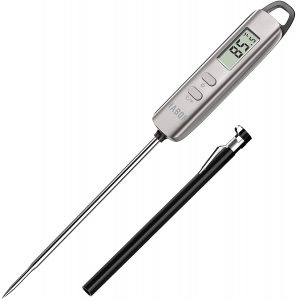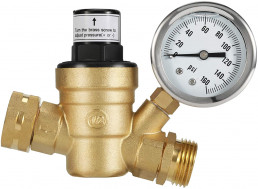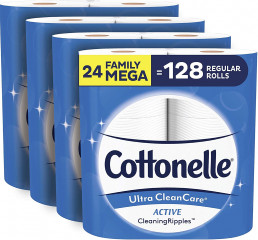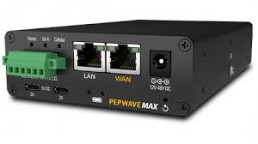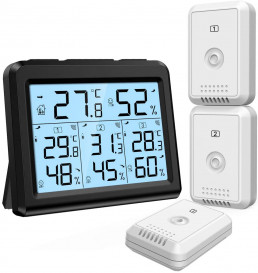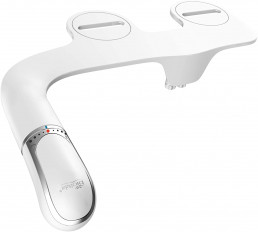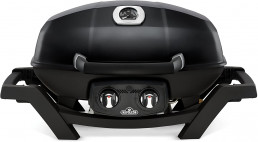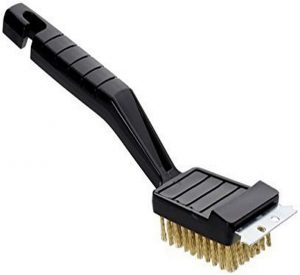Water Regulation - Definitely!
When we lived in our house, we didn't think much about water. You call the water department, get your service on and thats about it. But the world is a bit different for travelers. The quality and quantity of water you get from any RV park or random water source can vary significantly. Because of this you will want to get a water regulator - The PEX and plastic pipes in your RV cannot withstand high pressures and you can end up with a serious leak and expensive damage to your home. And no one wants that! We went with a pretty cheap option - Around $22 when we bought it on Amazon: For our motorhome, we use the Kohree RV water pressure valve.
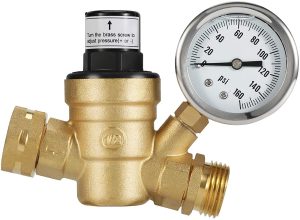
The reality is that most of the cheap regulators on Amazon are getting pumped out of a couple Chinese factories and are just that - cheap. This one seems to work fine, although our pressure has dropped at the tap (maybe we need to set the pressure higher, but it could be flow restriction issue with this valve). You could try to adapt a household regulator like this Zurn Wilkins - but that seems like wasted effort for something that is effectively a consumable at $22!
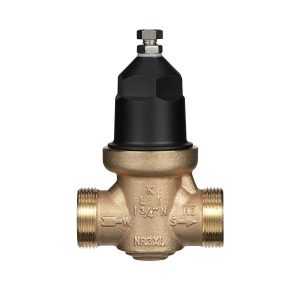
RV Toilet Paper - The Dirty Truth
Why is toilet paper a big deal in an RV? One very simple reason - if you clog up your black tank, you are going to have a very big mess on your hands. Unlike a house, every RV has a holding tank for your solids and liquids. When you clog a toilet in a house, you can usually fix it with a plunger, or an auger if it is especially bad. But in most cases, the issue won't be too bad because toilet paper flows through the smooth pipes in the house and out to the local sewer system (unless you have septic).
Contrast that to an RV, which essentially has a big plastic box that lets all that goodness sit and gum up together until you get around to emptying the tank. If your paper won't break down sufficiently, it will make a huge wad that will never make it out the tank drain. So it matters very much what you actually put down the toilet - wipes and paper towels are definite no-no's. And you need to be very careful with what kind of toilet paper you use. We considered quite a few options, weighing cost vs. ability to break down.
What we found was Cottonelle septic-safe toilet paper works perfectly fine (at least for us!).
It's only 1-ply but very soft and strong. We have a macerator in our master bathroom which helps break down the paper, but in the half bathroom we don't have a macerator and it's never been a problem at all.
Cottonelle Ultra CleanCare Septic-Safe
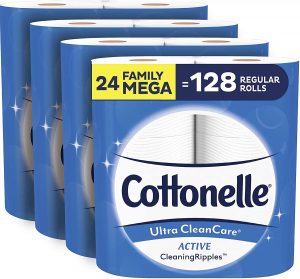
Thetford AquaSoft
Another septic-safe RV toilet tissue is Thetford AquaSoft but we found the cost is much more than Cottonelle and not as soft. We are sure its a great option, but unless we start having issues we are not going there! Thetford Aquasoft is marketed for RV's - designed to break down very easily. If you find that the Cottenelle isn't working, this could be a good option.
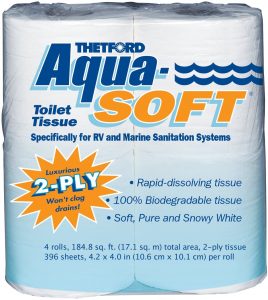
Scott Rapid-Dissolving
Scott Rapid-Dissolving is another popular choice for RV's. They claim it breaks down faster than the leading brand toilet paper. Scott Rapid-Dissolving is made for RV's but the rolls are smaller than regular toilet paper. We found you get much more paper with Cottonelle family mega rolls and it cost much less than Scotts.
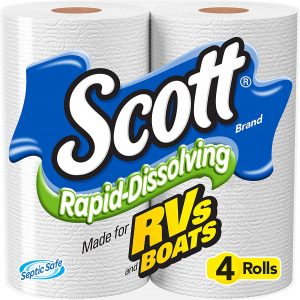
RV Internet
One of the most critical things for many people is having solid internet while on the road. We couldn't imagine not having the ability to be connected - I have had some form of always-on internet since 1997! We did a lot of research, and came to the following conclusions:
We needed at least two internet providers
Hardware should be mounted and set up like a house (no mifi as service)
Unlimited data if possible (with streaming, we expect to use hundreds of gigabytes per month)
Our Internet Providers
At the time of this writing, there are 3 big players. AT&T, Verizon and T-Mobile (Sprint is slowly become T-Mobile). From all our research, the best coverage comes from AT&T and Verizon. We were fortunate to get a pre-paid Verizon unlimited plan before they stopped selling it. AT&T has been more of a problem, and we are doing a post-paid iPad plan and a 3rd party reseller (which has proven to be a nightmare).
Our Setup
A few critical pieces make up our Internet strategy. The core of our setup is a Pepwave Max Transit DUO router with dual cat-12 modems.

This router is a beast (with a price tag to match). Peplink is mainly in the business of providing commercial solutions - think buses, police, fire and any other business that needs Enterprise-level gear and support. This means they are usually behind the curve in technology (in these markets, rolling out cool new things isn't a priority), but usually everything is just rock solid.
Having two modems (each with 2 SIM cards) lets this router do things that most cannot - it will test each connection and automatically make the fastest/best be the primary. For example, at the park we are currently at, we have Verizon as the primary, with a failover to AT&T. Even cooler, we also are connected to the parks wifi - which doesn't work very well but is available. That gives us a third option if the other options aren't working.

This is definitely somewhat of a luxury - you could have 2 jetpacks and make test both out when you get to a new location - or even change out the SIM's on the same jetpack. But connectivity is important to us, and portable jetpacks are not really designed to be on 24x7. And we found that this router does a better job compared to our Verizon 8800L with the Netgear MIMO antenna.
One reason we think we are getting better reception with this router is the fact we paired it up with a solid roof antenna, the Mobile Mark LTMG508 5in1 roof antenna.
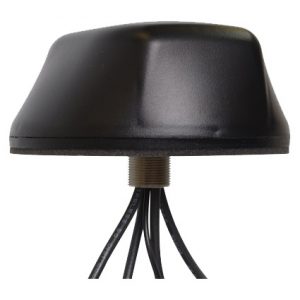
This antenna is smaller than it looks - easily fitting on most RV roofs. The only downside is you have to provide a ground plane - unlike the Poynting 5in1. For us this was no big deal - a small piece of galvanized metal from Home Depot worked perfectly. We ended up using a couple screws and sealant on top of our first AC unit. The antenna sticks just a few inches higher than everything else on our roof, and seems to be a good compromise of coverage and height. We hate to go ANY higher in height, but our Girard awnings create a metal ring around our entire roof (which came in handy for our solar install).
Temperature Monitoring - Vital for Your RV
We knew that moving from a house to an RV would require some changes - one of the biggest is being more diligent about your environment. Moving constantly and living in essentially a big black box guarantees that we will have wide swings in temperature throughout the year! Most of your things don't really care about these swings, but a few things do:
Pets
- Musical Instruments
- The Refrigerator
- Lithium Batteries
We have everything except pets, and wanted to be able to keep an eye on the coach as well as the basement (where the lithium batteries live). We wanted at least 3 sensors, and a display that we could set on the counter. In the end we looked at three different units:
AcuRite 02082M Home Temperature & Humidity Station
The AcuRite 02082M Home Temperature & Humidity Station is a really nice looking unit - full color, comes with 3 sensors and cost around $50 at the time of this writing.
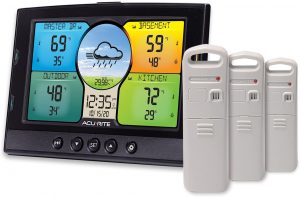
Ambient Weather WS-3000-X5
The Ambient Weather WS-3000-X5 is a powerhouse - comes with 3 sensors (around $85), or 5 sensors (around $100) and does temperature logging via an optional micro-SD card. The main unit can handle up to 8 sensors.
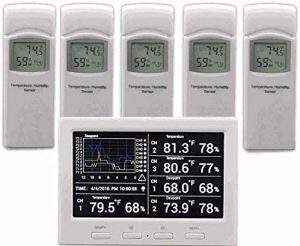
Keekit Outdoor Thermometer
The Keekit outdoor thermometer is pretty basic, lacking any sort of alarms. But it did have one advantage - when we bought it the unit only cost $31 with 3 sensors. It currently sits on our kitchen counter and monitors the freezer, the refrigerator, and the basement compartment where our batteries live. Although it isn't as fancy as the others, the price was right and so far has met our needs!
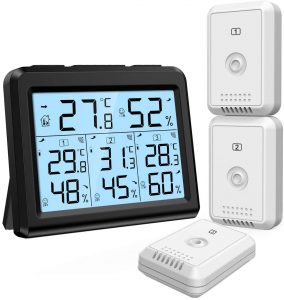
ZonePerfect Protein Bars
We take our diet pretty seriously - especially as we get older. Even though we work out at least 5 days a week, as the old saying goes, you can't out-exercise your diet. Calories in/calories out always applies.
Protein Bars
One of the tools in our toolbox is protein bars. Even though they have a fair amount of sugar in them, they make a good bridge between real meals (which we try to have as much as possible!).
ZonePerfect Protein bars are a good source of vitamins, protein and nutrition but are they really good for you? Well, we like them a lot. They are a great snack in between meals or if you want to get some protein before a workout or hike. What we also like about ZonePerfect protein bars is the variety of flavors and taste of them. Some of our favorite flavors are Oatmeal Chocolate Chunk, Chocolate Mint, Chocolate Chip Cookie Dough, and Fudge Graham.
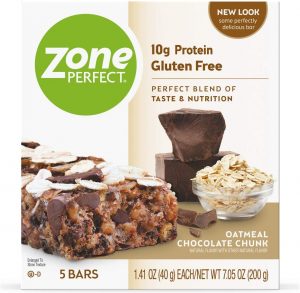
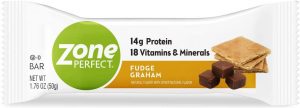
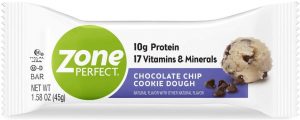
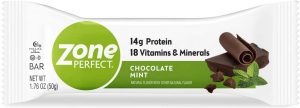
A Bidet for a RV? Sure, Why Not - Keep it Clean!
One thing we discovered MANY years ago is that a bidet is pretty much a necessity for survival. While many snicker and make fun of bidets, we know that THOSE people have actually never used the greatest invention that mankind has ever created! Why you ask?
- Cleanliness - You never have to touch your butt again if you don't want to. Number 2 is a cauldron of bacteria and other nastiness that will get you sick if you don't practice good hygiene. A good bidet will clean up even the worst backdoor messes :-)
- Economy - Saving money on toilet paper is a real thing - for a family this could be hundreds of dollars a year
- Cleanliness #2 - Using the right water stream, you can clean your insides out in a way that you won't believe! I know that sounds gross, but it is far better than the alternative (having stuff stuck in your "pipes" that a normal wiping can't get!)
In our sticks and bricks we had a variety of Bio-Bidet brand toilet seats - and they served us well over the years. They had all the bells and whistles - heated seat, heated water, air dryer, and even a remote control! But we didn't actually need most of that in our RV. And more critically, RV toilets do not play nice with standard large bidets. And those large bidets chew power doing all their fancy things, not helpful at all when you are boondocking and trying to conserve energy!
So we ended up looking at the non-powered options. They are pretty simple at heart - a valve that controls one or two wands that extend when the water is turned on. Turns out the chinese make dozens of variations on this theme :-)
Installing a Bidet in our RV
We ended up going with the Bio-Bidet Slimtwist - we have had good luck with Bio-Bidet and just as importantly, the low-profile fit below the cabinet door of our washer dryer (Really Entegra, washer/dryer on top of the main toilet?).
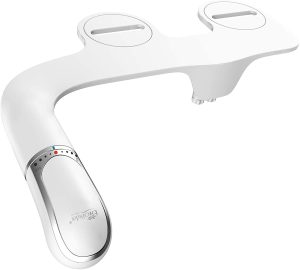
Grilling on the Road? Heck Yeah!
One thing we loved to do in our sticks and bricks was grilling - at least once a week we would fire up the Weber and make chicken and/or steak. Since we try to eat healthy and aren't exactly world-class chefs, we tend to cook a lot of chicken and use it for our dinners throughout the week. As you can see, we were used to a BIG grill for this task:
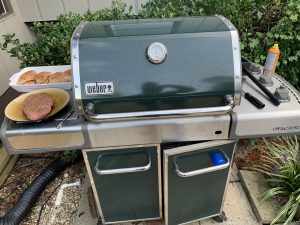
The Weber Genesis is a beast of a grill. Ours lasted 15 years - we replaced the flavor bars twice and maybe cleaned it a handful of times (probably should have been more). The only complaint was the rusting of the lower parts behind those doors. Because of that, we had to sell it for parts for $40 instead of getting at least $200 on Craigslist (these are $1,000 grills!).
Being in a large 45 ft coach gives us some flexibility in the size of grill we can take - while we looked at smaller options, we really wanted to be able to cook at least 6-8 chicken breasts if possible. Either for meal prep or if we have a party and want to get a lot of meat done was a priority!
We did have our sights set on another Weber - our last stood the test of time, and that is rare in the world of junk grills that fall apart. We narrowed our choices down to two contenders:
Weber Q2200 Portable Grill

The Weber Q2200 definitely fit the bill. It has 280 square inches of cooking space and 12K BTU of cooking power. We also liked the side shelves, especially if we didn't have a great location to put the grill at our campsite. We would expect to get good service from this grill. Unfortunately the grill had a couple downsides for us:
- It is set up for using small canisters, and we prefer to use a standard LP tank (far cheaper! You have to buy a LP tank adapter to use the bigger tank, at additional cost.
- There is only one larger burner on this grill - if you want to control the temperature of each side you are out of luck. We do this on a regular basis - running one side at the highest setting for the steak and the other side around 350 for the chicken. We loved the ability to do this with our Genesis. At the end of the day, this swayed us to getting one of these:
Napoleon TravelQ Pro 285 Gas Grill
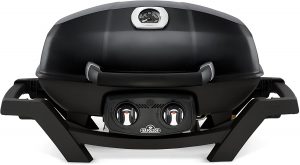
After doing a lot of research, we found a worthy competitor to Weber - the Napoleon TravelQ Pro 285. Similar in size and capability as the Weber, with one critical difference - two burners and more control over the temperature. Although made in China (as is most of Weber now), they clearly use higher quality components than a lot of the other manufacturers. Another bonus - the Napoleon Pro 285 is already set up for a big LP tank right out of the box, so no extra hose to buy. Of course, we will have to buy a different adapter if we do choose to use small tanks (if we took it tent camping for example). The only bummer so far is the lack of side tables - Not sure if that will matter, as they are pretty small (at least compared to the Genesis we were used to).
How Do we Clean It?
One thing we noticed, once we read the directions for the Napoleon (that's a first!) was a need for a brass grill cleaning brush. We believe that is because of the ceramic coating. If you go to the average Walmart, every brush is pretty much stainless steel. So we found a good option on Amazon in the Rubbermaid brass grill brush.
What Other Accessories Can We Not Do Without?
For us, grilling would be impossible without a decent thermometer. We have been through a few, and have settled on this one from Amazon - the Habor 022 meat thermometer. It finds the temp quickly, the reading stays stable, and it seems pretty accurate.
